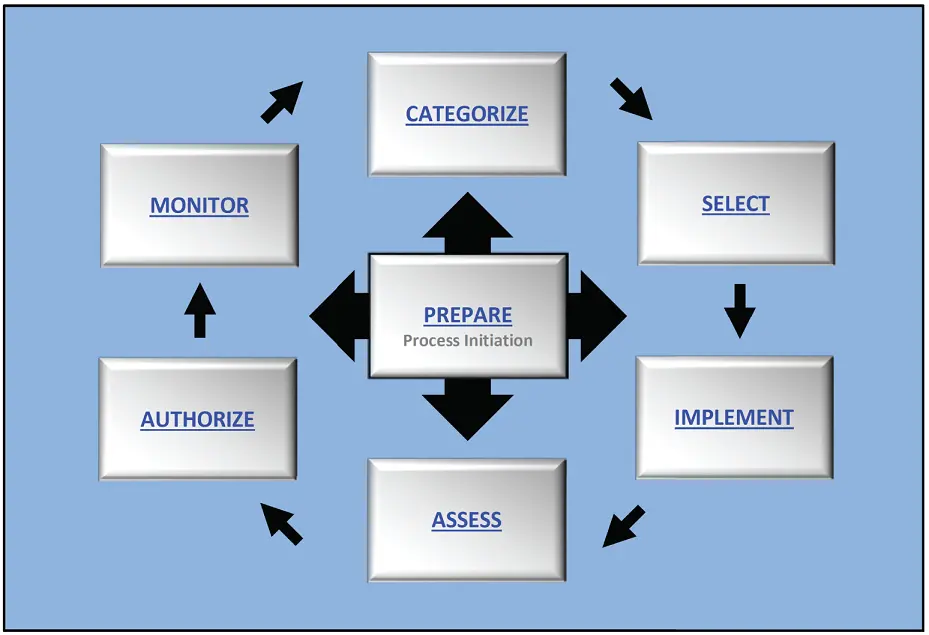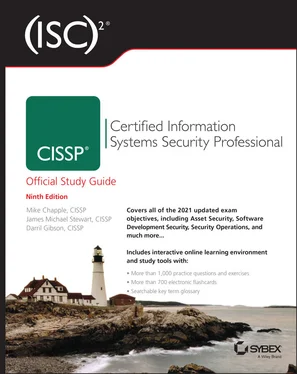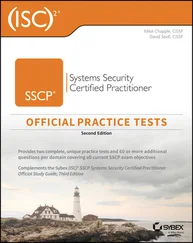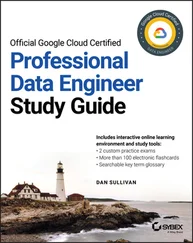3 Defined—A common or standardized risk framework is adopted organization-wide.
4 Integrated—Risk management operations are integrated into business processes, metrics are used to gather effectiveness data, and risk is considered an element in business strategy decisions.
5 Optimized—Risk management focuses on achieving objectives rather than just reacting to external threats; increased strategic planning is geared toward business success rather than just avoiding incidents; and lessons learned are reintegrated into the risk management process.
If you have an interest in learning more about RMM, there is an interesting study of numerous RMM systems and the attempt to derive a generic RMM from the common elements. See “Developing a generic risk maturity model (GRMM) for evaluating risk management in construction projects” at www.tandfonline.com/doi/full/10.1080/13669877.2019.1646309.
An often-overlooked area of risk is that of legacy devices, which may be EOL and/or EOSL:
End-of-life (EOL) is the point at which a manufacturer no longer produces a product. Service and support may continue for a period of time after EOL, but no new versions will be made available for sale or distribution. An EOL product should be scheduled for replacement before it fails or reaches end-of-support (EOS) or end-of-service life (EOSL).
EOL is sometimes perceived or used as the equivalent of EOSL. End-of-service-life (EOSL) or end-of-support (EOS) are those systems that are no longer receiving updates and support from the vendor. If an organization continues to use an EOSL system, then the risk of compromise is high because any future exploitation will never be patched or fixed. It is of utmost importance to move off EOSL systems in order to maintain a secure environment. It might not seem initially cost-effective or practical to move away from a solution that still works just because the vendor has terminated support. However, the security management efforts you will expend will likely far exceed the cost of developing and deploying a modern system–based replacement. For example, Adobe Flash Player reached its EOSL on December 31, 2020, and should be uninstalled, as recommended by Adobe.
A risk framework is a guideline or recipe for how risk is to be assessed, resolved, and monitored. NIST established the Risk Management Framework (RMF) and the Cybersecurity Framework (CSF). These are both U.S. government guides for establishing and maintaining security, but the CSF is designed for critical infrastructure and commercial organizations, whereas the RMF establishes mandatory requirements for federal agencies. RMF was established in 2010, and the CSF was established in 2014.
The CSF is based on a framework core that consists of five functions: Identify, Protect, Detect, Respond, and Recover. The CSF is not a checklist or procedure—it is a prescription of operational activities that are to be performed on an ongoing basis for the support and improvement of security over time. The CSF is more of an improvement system rather than its own specific risk management process or security infrastructure.
The RMF, defined by NIST in SP 800-37 Rev. 2 ( csrc.nist.gov/publications/detail/sp/800-37/rev-2/final), establishes mandatory security requirements for federal agencies. This is the primary risk framework referenced by the CISSP exam. The RMF has six cyclical phases (see Figure 2.5):
Prepareto execute the RMF from an organization- and system-level perspective by establishing a context and priorities for managing security and privacy risk.
Categorizethe system and the information processed, stored, and transmitted by the system based on an analysis of the impact of loss.
Selectan initial set of controls for the system and tailor the controls as needed to reduce risk to an acceptable level based on an assessment of risk.
Implementthe controls and describe how the controls are employed within the system and its environment of operation.
Assessthe controls to determine if the controls are implemented correctly, operating as intended, and producing the desired outcomes with respect to satisfying the security and privacy requirements.
Authorizethe system or common controls based on a determination that the risk to organizational operations and assets, individuals, other organizations, and the nation is acceptable.
Monitorthe system and the associated controls on an ongoing basis to include assessing control effectiveness, documenting changes to the system and environment of operation, conducting risk assessments and impact analyses, and reporting the security and privacy posture of the system.
[From NIST SP 800-37 Rev. 2]

FIGURE 2.5The elements of the risk management framework (RMF) (from NIST SP 800-37 Rev. 2, Figure 2)
These six phases are to be performed in order and repeatedly throughout the life of the organization. RMF is intended as a risk management process to identify and respond to threats. Use of the RMF will result in the establishment of a security infrastructure and a process for ongoing improvement of the secured environment.
There is significantly more detail about RMF in the official NIST publication; we encourage you to review this publication in its entirety for a complete perspective on the RMF. Much of the information in the prior risk management sections in this chapter was derived from the RMF.
Another important guide to risk management is the ISO/IEC 31000 document “Risk management — Guidelines.” This is a high-level overview of the idea of risk management that many will benefit from reading. You can find it online at www.iso.org/obp/ui/#iso:std:iso:31000:ed-2:v1:en. This ISO guideline is intended to be useful to any type of organization, whether government or private sector. A companion guide, ISO/IEC 31004 “Risk management — Guidance for the implementation of ISO 31000” ( www.iso.org/standard/56610.html) might also be of interest, along with ISO/IEC 27005, “Information technology — Security techniques — Information security risk management” ( www.iso.org/standard/75281.html).
The NIST RMF is the primary focus of the CISSP exam, but you might want to review other risk management frameworks for use in the real world. Please consider the following for future research:
The Committee of Sponsoring Organizations (COSO) of the Treadway Commission's Enterprise Risk Management — Integrated Framework
ISACA's Risk IT Framework
Operationally Critical Threat, Asset, and Vulnerability Evaluation (OCTAVE)
Factor Analysis of Information Risk (FAIR)
Threat Agent Risk Assessment (TARA)
For further research, you'll find a useful article here: www.csoonline.com/article/2125140/it-risk-assessment-frameworks-real-world-experience.html. Understanding that there are a number of well-recognized frameworks and that selecting one that fits your organization's requirements and style is important.
Social engineering is a form of attack that exploits human nature and human behavior. People are a weak link in security because they can make mistakes, be fooled into causing harm, or intentionally violate company security. Social engineering attacks exploit human characteristics such as a basic trust in others, a desire to provide assistance, or a propensity to show off. It is important to consider the risks that personnel represent to your organization and implement security strategies to minimize and handle those risks.
Читать дальше













